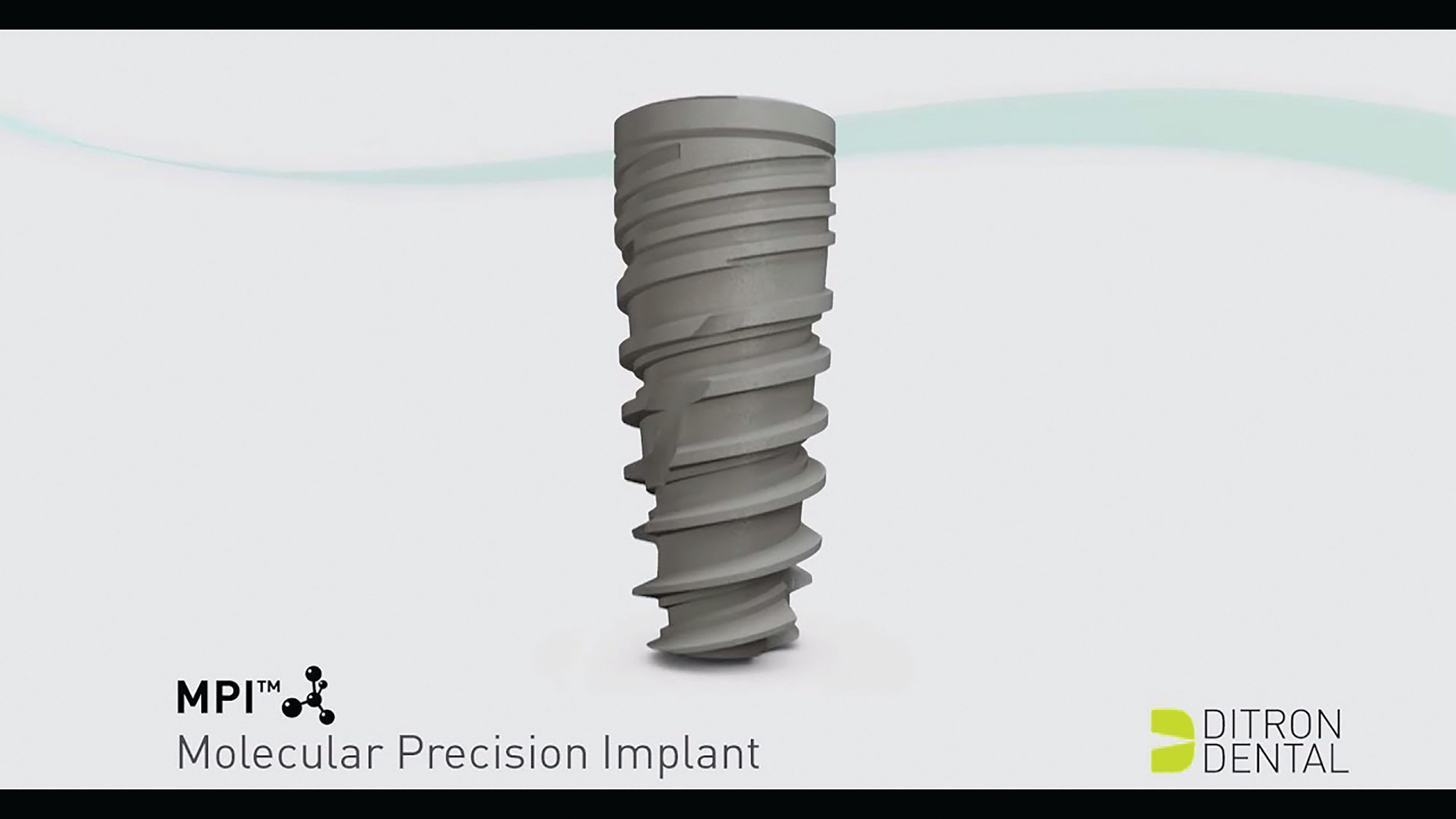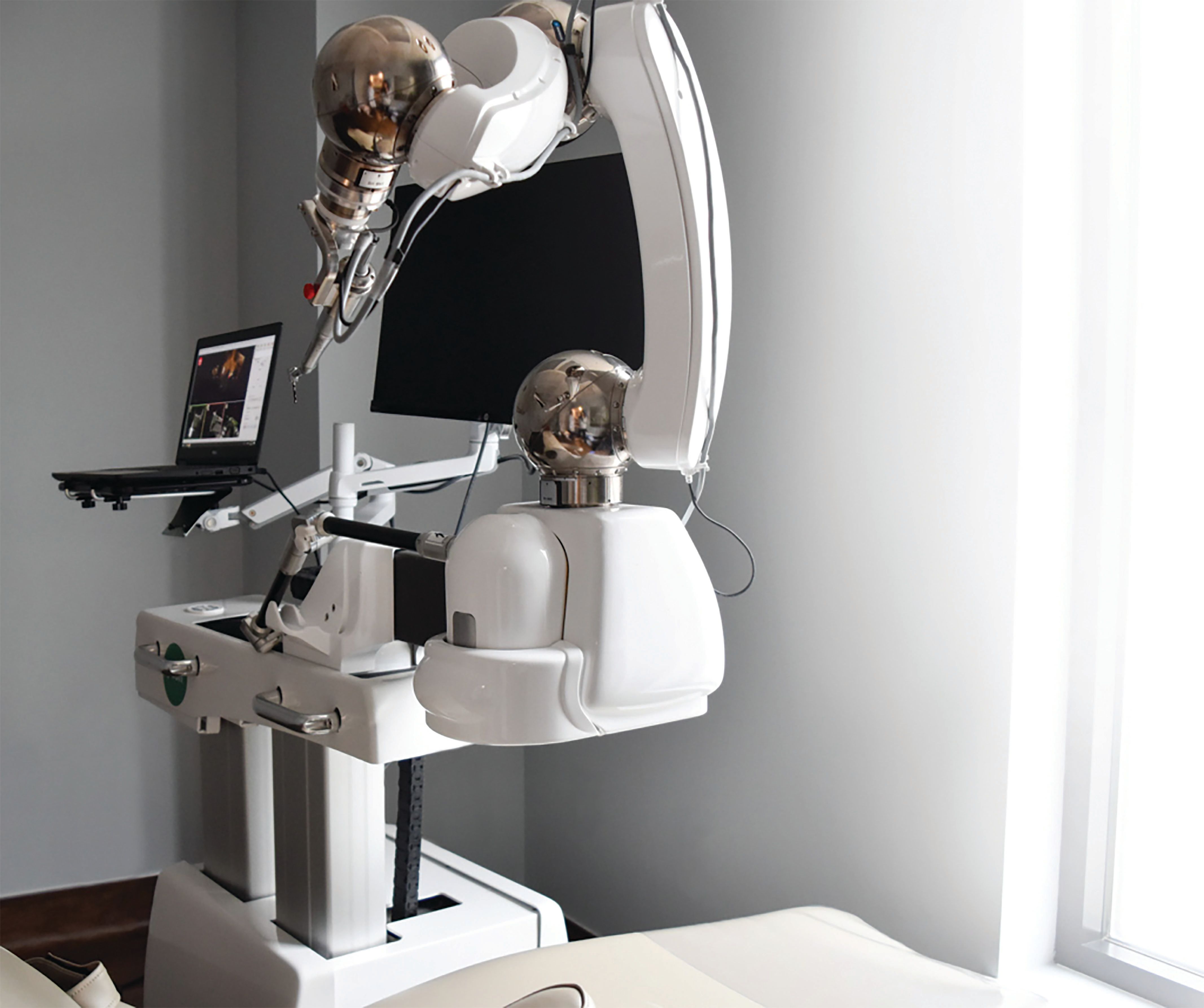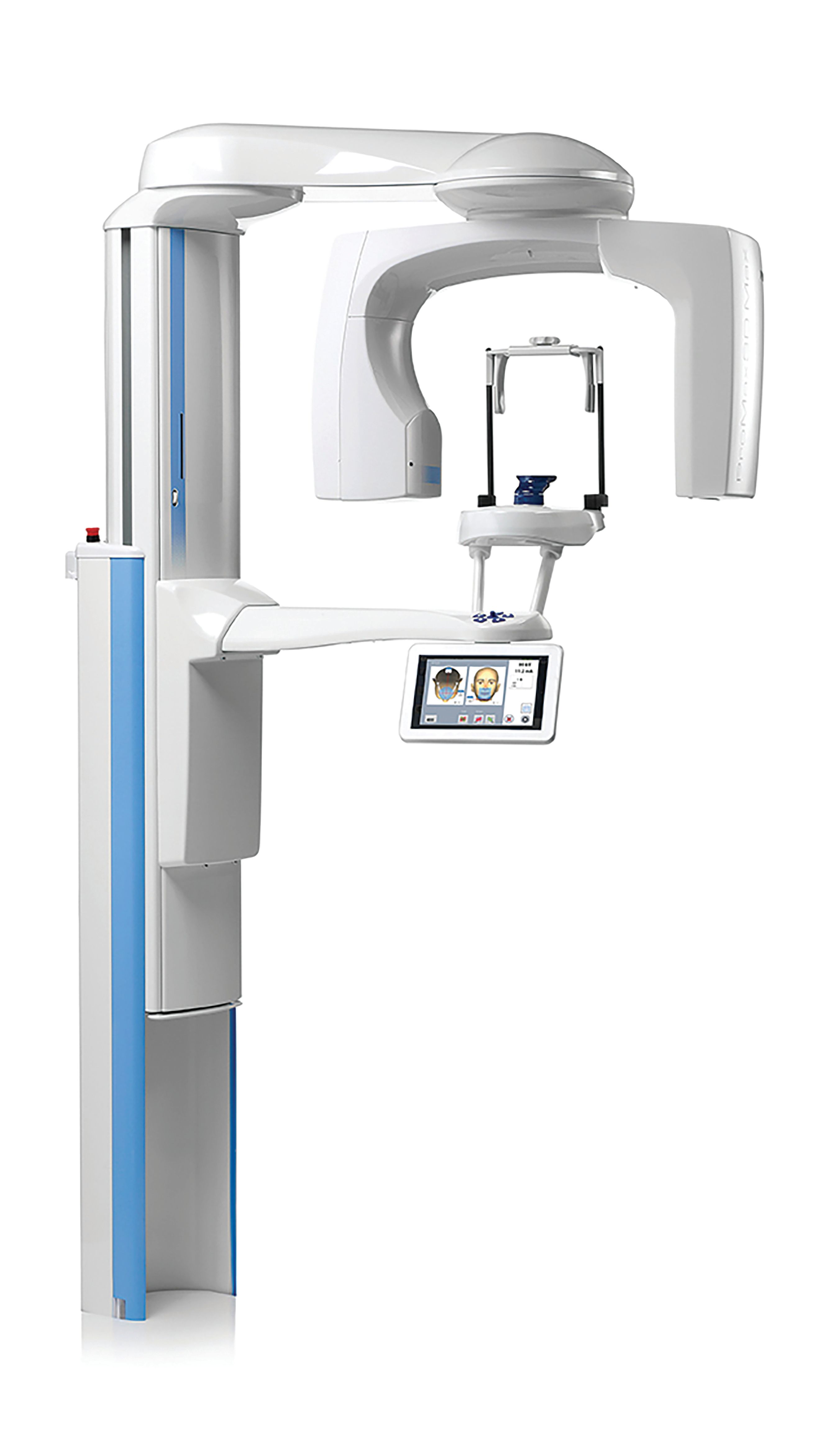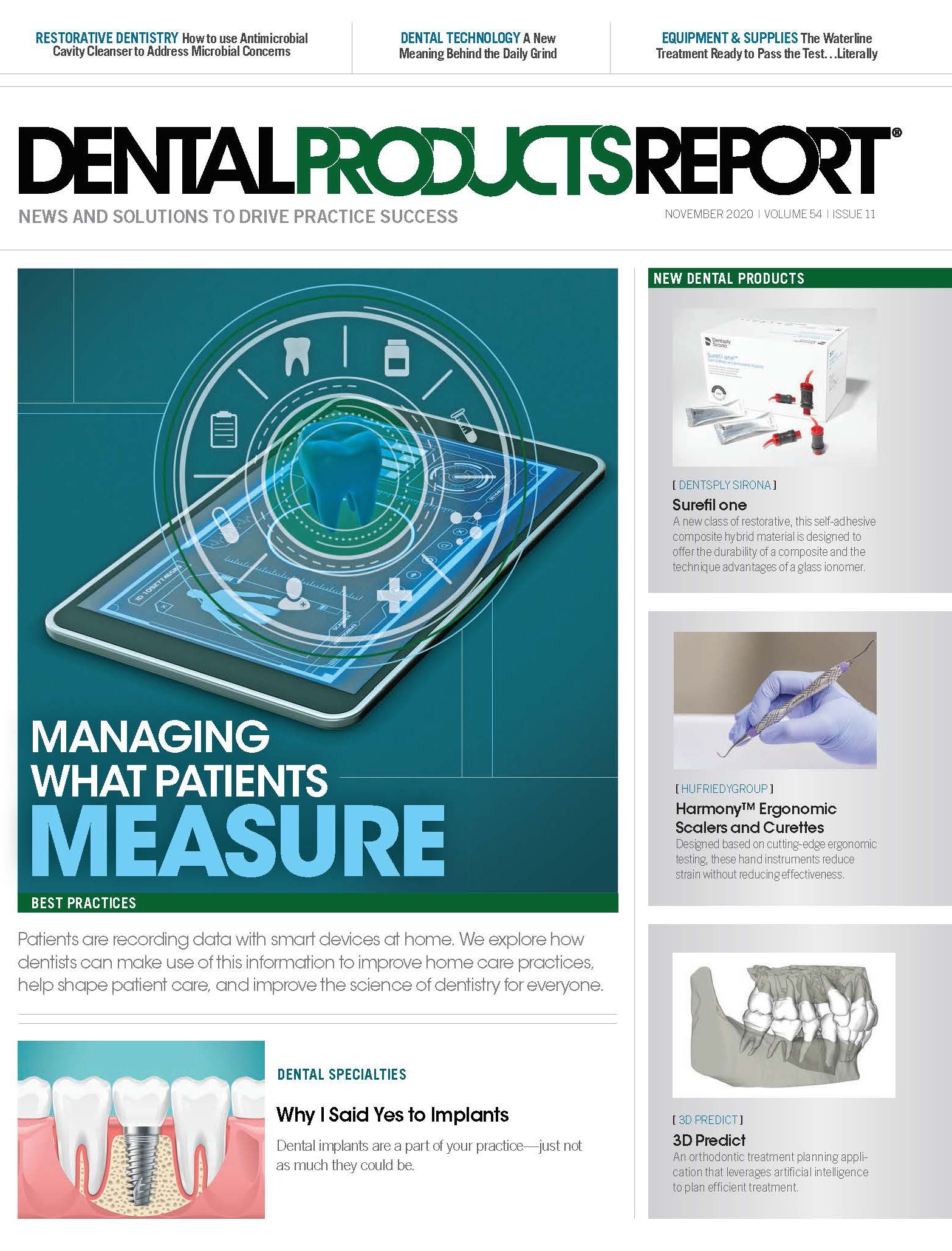Why I said yes to implants
Dental implants are a part of your practice—just not as much they could be.
© ONYXprj / stock.adobe.com

Dental implants present an excellent treatment opportunity for many of your patients. So, why aren’t more patients accepting the treatment? With the right tools and knowledge, it’s possible to overcome patient fears and concerns and deliver the best implant treatment possible.
Choose Your Implant Supply Partner Wisely
When Brady Smith, DDS, was in college, his Xbox broke. Broke himself, he needed to fix it because he couldn’t afford a new one. Unfortunately, the screws Dr Smith needed to remove to fix it were neither Phillips nor flathead. He had to buy a special screwdriver because the tools he had made the job impossible. However, according to Dr Smith, once he had the right tools, it was not only possible to fix the Xbox but also simple.
“As far as treatment planning goes, I think dentistry is the same,” says Dr Smith, host of the podcast, “Drilled.” “All of a sudden, your confidence goes way up when you know you have the tools to put an implant there.”
In other words, Dr Smith says when you have the right tools, you have confidence in your treatment plan. He bases his relationship with implant providers on his faith in their devices.
“One person might say, ‘I can’t put an implant there.’ Another person might say, ‘I can,’ because they have more confidence in the tools and materials that they have at their disposal,” he explains.
According to Dr Smith, patients have to accept the treatment plan, which is different with many factors that go into it. However, he thinks confidence plays a massive role in that as well. Treatment planning with confidence allows for delivering a plan with confidence.
“I can also tell you that without confidence, your patient will run the other direction,” he says. “You better come into the operatory ready to convince people that you know what you’re doing.”
Dr Smith is a general dentist who has been placing implants for the past 8 years. He places between 300 to 400 implants in his Vancouver, Washington practice. He says that in addition to feeling confident that patients are in good hands for their implant surgery, patients want to know 2 things:
- Am I getting a reasonable price without sacrificing quality?
- Is it going to restore my tooth?
“One of the most common questions I get in my office is, ‘Why is there such a difference in pricing amongst implants?’ Different implants cost different amounts. You want an implant partnership that has reasonably-priced materials, so you don’t have to pass those costs along to patients,” Dr Smith says.
Dr Smith is happy with his implant partnership. He started using implants from Ditron Dental USA 6 months ago for the pricing, assortment of products, materials to choose from, and its surgical kits’ user-friendliness. Also, Ditron Dental is helping Dr Smith with the Halo Dental Network, a nonprofit organization that is helping underserved patients with full-mouth restorations by dentists who donate their time and materials. Dr Smith is the CEO and recruits dentists from across the country to commit to one free case a year to change the life of a patient who otherwise wouldn’t have access to treatment.
Cost is a significant patient concern. However, patients and dentists don’t want to sacrifice quality for a lower cost. Dr Smith says dentists want the highest quality product they can get at the lowest price.
"(3D imaging) helps provide a patient with a high level of confidence that the dentist knows exactly what they’re doing…and more peace of mind coming into the procedure.” – Rob Gochoel
“In my experience, Ditron Dental comes through on that,” says Dr Smith. “They are super reasonably priced, and the quality of the products is outstanding.”
According to Dr Smith, dentists who haven’t yet started implant dentistry should start now. People actually come to a dentist seeking implants, which is not true of other restorative treatments.
“They don’t come in and say, ‘I’ve been looking forward to getting a root canal. What’s your price on that?’” Dr Smith says. “Implants are a big-ticket item that our patients want. It’s about supply and demand—and there’s a huge demand for it out there.”
However, dentists don’t want to do implants to serve new patients that inquire about it; you want to place implants for your current patients, he says. Most patients don’t want to go to a specialist. They want to receive treatments with you. So when dentists can provide implants for them in the same building, patient acceptance rates and satisfaction increase.
“And it’s not just the patient acceptance of that 1 patient,” Dr Smith explains. “It’s their friends and family, too.”
The MPI System from Ditron Dental uses its unique Spherical Helix Chamber, designed to promote wound healing and bone formation.

Dr Smith advises dentists not to get too stuck in a rut with their materials. Keeping an open mind and trying other materials can improve patient experience and clinical outcomes. Dr Smith thought he would have used the first implant system he tried forever because he loved it that much. However, that first system also inspired thoughts about how he could improve the procedure. Over time, he has used several implant systems, without regrets.
“Some materials are better than others,” Dr Smith says. “If we never seek to try new things, we’ll never know how easy things can be for us.”
Seeing is Believing
Rob Gochoel, vice president of Sales for PreXion, a manufacturer of 3D cone beam computer tomography (CBCT) imaging systems, says 3D imaging is like a road map for implant restoration, which is excellent for patient education. The imaging software helps with treatment planning by allowing the dentist to show the patient their CT scan and explain what the implant will look like after surgery.
“It helps provide a patient with a high level of confidence that the dentist knows exactly what they’re doing in terms of placement and more peace of mind coming into the procedure,” Gochoel explains. “The CT scan takes any guesswork out of the surgery since it shows the dentist exactly where the implant will be placed.”
Patients who haven’t gotten an implant do not know what to expect. Depending on where the patient is in the process, 3D imaging gives them a way to see the finished product, Gochoel says. Seeing it can help the patient feel comfortable moving forward with the implant treatment, which can be a significant out-of-pocket investment because insurance often does not cover much of the expense, he adds.
“Taking that a step further, it shows them what their investment in the implant is really paying for,” Gochoel says. “There is also software available that will show what the restoration will look like. Now, it’s not a 100% representation of the final restoration, but it’s close.”
The PreXion software has a library of more than 100 implants from various manufacturers. Dentists can try different sizes based on the measurements and their preferred implant manufacturer, Gochoel explains. The software aids the dentist by accurately measuring the implant site. The software design also allows the dentist to show patients how the implant will appear in their jaw.
The PreXion 3D Excelsior scanner contains modules for evaluating 2D panoramic and cephalometric, and 3D images. Its software includes an extensive implant library.

Once the software determines the implant size, PreXion’s bridge software can enhance the digital workflow. PreXion partners with 3D Diagnostix (3DDX), a company based in Massachusetts, so dentists can send their images directly through the software for radiological interpretation to confirm the treatment plan or create a surgical guide. Guide creation is becoming a popular option, Gochoel says.
“There is no guesswork involved, no measurement on the day of the actual surgery because they use the guide to create the site for the surgery itself,” he says.
Some practices want to print the guide themselves on their 3D printers. 3DDX can send the STL file so that they can. Gochoel says that the idea was to make the workflow as easy as possible for the dentist to do the planning and production through a single platform so that the doctor can maximize efficiency.
“They can plan the implant surgery and they know exactly where it is going into the bone,” he says. “And it can create faster, more efficient surgery with more consistent outcomes as well.”
Dentists should determine what kind of implant dentistry they want for their practice, according to Gochoel. Whether it’s single-unit implants or multi-unit placement, clinicians should build long- and short-term plans to attract and work on those types of cases, he says. An essential component of the plan would be assessing what the dentist feels comfortable with regarding implant surgery and what they need more training to accomplish. Gochoel says there are many resources available, from PreXion and other entities.
“Organizations like the American Association of Implant Dentistry and independent or company-sponsored implant training centers will help them create a plan for the type of implant dentistry they want to do,” Gochoel says.
Be Robotic in Your Approach
Jody Griffin II, DDS, said yes to implants because his patients wanted him to handle the surgery rather than go to a specialist. Today, he takes the implant cases for his group practice in Knoxville, Tennessee. He has been placing implants for 18 years out of his 20-year career.
Describing himself as a “tinkerer” and a “gadgeteer,” he has been using the Yomi Dental Robotic System by Neocis for the past year. Robotic placement technology was appealing to Dr Griffin because it built on guided surgery’s strengths of accuracy and efficiency. Dr Griffin says it even surpasses them. The technology is also faster and more cost-efficient, which benefits both the patient and the clinician.
“Plus, it’s cool when you see it in action. It takes your breath away for what it’s capable of doing,” he says.
When Dr Griffin explains the technology to patients, he compares it to the user experience between mapping software on the smartphone versus a Tomahawk missile. According to him, phone mapping software can tell you where to turn, but you can still miss the turn or sway too wide and damage the car.
Neocis’ Yomi Dental Robotic System offers procedure planning, augmented anatomical visualization, and Haptic guided surgery.

“But a Tomahawk missile, once the military points that thing, it goes to the point of attack, and it does not vary. That’s the difference between a navigation-type system and haptic guidance; you can’t veer off the plan, and so there’s no room for error,” Dr Griffin explains.
Robotic technology takes the human mistake component out of the equation. When humans move around the patient, Dr Griffin explains, it changes how you see things.
“The robot only sees the jawbone and the implant and where it’s supposed to be,” he says. “So, it does not change its bearings from that plan.”
According to Dr Griffin, one of the most significant issues with a general dentist placing implants is deciding whether one can provide the care that is equal to or greater than a specialist. However, because there is no specialty for implants, general dentists need to consider all the dental surgical specialties. In response, he says guided surgery became increasingly popular for general dentists over the years, not only for the accuracy they provide regarding implant placement, but also for patient safety and experience.
“From a patient standpoint, they view any health care professional on the cutting edge of technology as a leader in their field, so there is a marketing aspect of it, also,” Dr Griffin says.
One of the most significant benefits to taking on implants is that he no longer had to refer many of his implant cases to specialists, Dr Griffin says. He felt that his patients didn’t like a new practice experience and were more comfortable having the surgery in their “dental home.”
“Also, I wanted to control the case from start to finish and not rely on somebody else not in my office who I don’t have direct communication with,” says Dr Griffin. “It’s a little bit different now with digital. You can certainly plan cases digitally and share that information, but I didn’t have that 18 years ago.”
While Dr Griffin says his practice had high implant treatment acceptance rates before incorporating the Yomi Dental Robotic System, the technology helped in a few different ways.
First, his practice is aware that implants are a high-ticket item for many patients, so they work to make them within reach for all patients. The technology’s efficiency allows for more wiggle room in what they charge because of the chair time they save.
The safety factor also increases patients’ comfort level with moving forward with the treatment faster, rather than “thinking about it” first. Also, the technology itself has attracted new patients to the practice because theirs is the only practice in the state of Tennessee using robotic placement.
“I get to hang my hat on that for a little bit—until they sell another one down the street, Dr Griffins says.
Building Patient Confidence by Including Them in the Plan
Michael Young, DDS, didn’t always have 3D imaging and printing available in his Sterling Heights, Michigan, practice. He used to have an all-traditional analog workflow. Back then, Dr Young referred everything out for his implant placements, which took a lot of time, reliance on patient compliance, a feeling of the loss of control, and accrual of high external expenses.
Since investing in his intraoral scanner, the Planmeca ProMax® 3D Classic imaging system with Planmeca Romexis® software and 3D printer, he can do everything in his office, including printing the surgical guide. Using this technology, Dr Young also knows right away if the patient is even a candidate for implants and whether or not he’ll need to do a bone graft.
“Because I planned the entire case three-dimensionally, there are no surprises,” says Dr Young. “I can print my own surgical guide and, the day of surgery is not nearly as stressful. It’s actually enjoyable.”
Enjoyable was not always how Dr Young would describe placing implants. When free-handing implant placements, he worried the post-procedure x-ray would show the angulation was off. Using a surgical guide made a significant difference for him.
“I know where it’s going to be. I don’t worry about it being off or too close to another tooth,” he says. “It’s going to be where I planned it based on that 3D image and the library and software.”
The ProMax® 3D Classic imaging system from Planmeca supports a wide range of options and protocols. Its Ultra Low Dose™ feature allows the unit to capture images at patient doses comparable to panoramic images.

According to Dr Young, when he didn’t control the process, the surgical guide could cost hundreds of dollars and take weeks. Now, with the technology right in the office, he can do it the same day.
“I keep control of the case. The cost is way lower, and it’s way more efficient,” he says.
He describes having the implant library and Planmeca Romexis software in his office as game changing. Because all the software comes in one platform, he can plan the whole case on one computer within one software. All components integrate from the intraoral scan data to the 3D image.
“I don’t have to export the file to another third-party software,” Dr Young says. “It’s all right in there. It makes it a lot easier, and I don’t have to pay to export the files anywhere.”
Dr Young says this technology also improves patient education. With the Planmeca Romexis software, the team can bring up any image in any room. When he enters the room, he brings up the image, sometimes on his laptop, and plans the case with patients.
“I show them how I go into the implant library, pick the implant and put it right on the jaw and move it around,” Dr Young explains. “They see what I do, and it has a huge impact on patient acceptance.”
That isn’t all patients can see; the image will show if there is enough bone to place an implant, as well. Dr Young can show patients why they might need a sinus lift. He also offers them the surgical guide and explains how and why the guide will make their surgery appointments easier. He says it is especially helpful with patients who have a terrible impression of implants after hearing stories about implants failing or bad experiences during surgery from other people. These skeptical patients like the level of detail Dr Young shares with his technology.
“It builds confidence with the patient. They feel better about the process,” Dr Young says.
Another thing he likes about his system is the ultra-low-dose radiation the Planmeca system provides. It minimizes exposure to his patients without compromising on image quality.
“When I come back into the room, and I am planning the case on the computer, I tell patients, ‘This image was less radiation than the images we take here in the operatory using a sensor,’” Dr Young says.
According to Dr Young, the majority of his implant placements tend to be single restorations. He thinks the key to having a successful implant placement process in your practice requires 2 things: Comprehensive education and investing in the right technology.
He is not a fan of taking a 1-day course and then placing implants. He recommends comprehensive training courses with lots of hands-on learning. He also suggests taking advantage of all the educational opportunities available from manufacturers, peers, and online resources.
“To be successful, you also need to take advanced courses, such as bone grafting and sinus lifts, to get comfortable with it,” Dr Young says. “And in the beginning, refer the difficult cases out until you get more experience.”
Dr Young says he understands that some dentists are reluctant to make a large technology investment. However, if dentists are outsourcing these parts of the implant process because they don’t have the technology in-house, they miss a significant opportunity for increased production from these procedures.
“If you’re doing enough of these cases,” he says, “it’s silly not to have it.”
